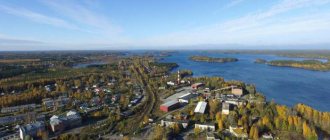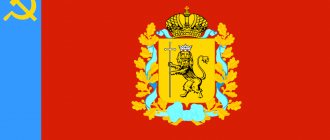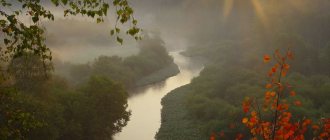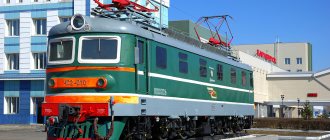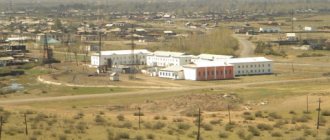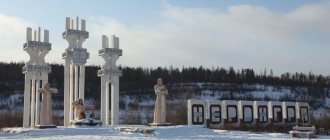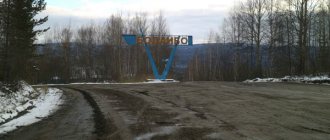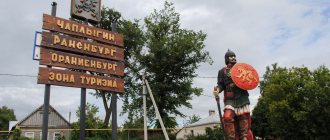City in Dagestan, Russia
| Buynaksk Buynaksk | |
| City [1] | |
| Other transcription(s) | |
| • Kumyk | Shura / Temirkhan-Shura |
| Buynaksk in winter | |
| Coat of arms | |
| Location Buynaksk | |
| Buynaksk Location Buynaksk Show map of Russia Buynaksk Buynaksk (Republic of Dagestan) Show map of the Republic of Dagestan | |
| Coordinates: 42°49'N 47°07'E / 42.817°N W. 47.117°E / 42.817; 47.117 Coordinates: 42°49'N 47°07'E. / 42.817 ° N W. 47.117°E / 42.817; 47.117 | |
| A country | Russia |
| Federal subject | Dagestan [1] |
| Based | 1834 [2] |
| City status from | 1866 [2] |
| Height | 490 m (1610 ft) |
| population size (2010 Census) [3] | |
| • General | 62 623 |
| • Evaluate (2018) [4] | 65 080 ( + 3,9% ) |
| • Classify | 255th place in 2010 |
| Administrative status | |
| • Subordinate | Buinaksk city [1] |
| • Capital from | Buynaksky district [1], Buinaksk [1] |
| Municipal status | |
| • Urban district | Buynaksky urban district [5] |
| • Capital from | Buinaksky urban district [5], Buinaksky municipal district |
| Timezone | UTC+3 (MSK[6]) |
| Postal code [7] | 368220 |
| OKTMO ID | 82705000001 |
| Web site | buynaksk05.ru |
Buynaksk
(Russian: Buynaksk; Kumyk: Shura/Temirkhan-Shura,
Shura/Temirkhan-Shura
) is a city in the Republic of Dagestan, Russia, located in the foothills of the Greater Caucasus on the Shura-Ozen River, 40 km (25 mi) southwest of capital of the republic Makhachkala. Population: 62,623 (2010 census); [3] 61,437 (2002 census); [8] 56,783 (1989 census);[9] 40,000 (1970).
History[edit]
Temir-Khan-Shura in the 1900s
Until 1922, Buynaksk was known as Temir-Khan-Shura (Temir-Khan-Shura), that is, the lake or cliff of Tamerlane, who is said to have camped here in 1396 after the defeat of Tokhtamysh during the Tokhtamysh-Timur War. It first appears in Russian chronicles in the 1590s, when Muscovite ambassadors on their way to Georgia passed nearby. It remained a small town ruled by a bek. In 1830, the Russians destroyed it when he sided with Kazi Mulla. In 1832, Russian troops under Klugenau were camped here during Rosen's raid on Gimry. In 1834, Klugenau built a fort on a cliff above the lake, which soon became the headquarters of the Absheron Regiment and the most important Russian fort in the depths of Degestan during the Murid War. In 1849, Hadji Murad launched a daring raid on the city. The place was unhealthy, and Argutinsky drained the lake in 1858 to prevent the spread of disease. [10] It received city status in 1866. [2] In 1920 it was the center of the ephemeral Mountain Republic of the North Caucasus. On November 13, 1920, the government of the RSFSR proclaimed the autonomy of Dagestan at the congress of the Dagestan people, which was held in Temir-Khan-Shura. In 1922, the city was renamed Buynaksk in honor of the revolutionary Ullubiy Buynaksky. In May 1970, Buinaksk was heavily damaged by an earthquake.
In 1999, a car bomb exploded near an apartment building where officers' families lived, killing sixty-four people. [eleven]
On 13 August 2009, Buynaksk was the site of two attacks linked to rising violence in Dagestan and neighboring Chechnya. About ten people first opened fire with automatic weapons at the police post, killing four policemen. The gunmen then entered a nearby sauna complex and killed seven female employees. [12]
On September 5, 2010, a suicide car bombing at a military base in the city killed three soldiers and injured 32. The driver of a Zhiguli car crashed into the gate of the base and headed towards an area where soldiers were quartered in tents. The soldiers opened fire on the vehicle before it reached the center of the base. The driver then crashed into a military truck, where it exploded. After the explosion, a bomb planted on the side of the road hit the car in which investigators arrived at the scene, but no injuries were reported in the second explosion. [11] However, the attackers claimed to have killed 56 Russian soldiers in the explosion. [13]
Buynaksk
Historical reference. The city is the cradle of the October Revolution in Dagestan.
According to legend, the foundation of the city is associated with the name of Tamerlane (Temir Khan). In 1396, Tamerlane’s army camped near a lake called Temir-Khan-Shura by the highlanders; an aul of the same name arose at the site of the army’s camp (the lake was drained in 1854). In 1834, Russian military fortifications were built near the village - the Temir-Khan-Shu-ra fortress. Shura is a Kumyk “lake”, i.e. all together “Lake Tamerlane”.
In November 1920, the autonomy of Dagestan was proclaimed in Temir-Khan-Shura. In 1922, the city was renamed in honor of Ullubiy D. Buinaksky (1890-1919), a participant in the struggle for Soviet power in Dagestan.
The city is located away from federal highways, but at the same time it is the “gateway to the mountains.” Through Buinaksk there is communication with 17 regions of Dagestan. It is connected by a railway line to the Moscow-Baku highway. The highway passing through the Atly-Boyunsky Pass connects the city with Makhachkala and connects to the Rostov-Baku highway. Highways of republican significance pass through it: Makhachkala - Buinaksk - Levashi - Gu-nib; Makhachkala - Buynaksk - New Chirkei - Kizilyurt; Makhachkala - Buinaksk - Nizhneye Kazanishche.
It is located in a basin between the mountains of the main Caucasus range at an altitude of 475-500 m above sea level.
Buynaksk is a complex city in terms of geographical and geological location. The climate is continental, with very warm summers and mild winters, characterized by a large number of sunny days a year.
The area of the territory is 20.95 square meters. km.
Population. The population is 61,400 people; density - 29 32.4 people per 1 sq. km of occupied area. National population structure (according to the 2002 census): Avars - 46.0%; Kumyks - 31.4; Laks - 6.9; Dargins - 6.2; Russians - 6.0; Azerbaijanis - 0.7;
Lezgins - 0.8; Tabasarans - 0.2; Aguls - 0.1; Nogais - 0.08; Rutulians - 0.01%.
Economic specialization. The city's industry is represented by such enterprises as OJSC "Buinaksky Aggregate", CJSC "Musharaka", MUP "Buinaksky Asphalt Concrete", MUP "Typography".
Main types of products: ben-
zone pumps, jacks, pump, car clamp -
ny, bakery and confectionery products, ba-
night products, dairy products, plastic
wrought iron pipes and connections, asphalt.
Transport. City transport - buses and trolleybuses.
City infrastructure. The total area of the city housing stock is 1027.6 thousand square meters. m, including state - 38.5 thousand, municipal - 36.8 thousand; private - 952.3 thousand sq. m. The housing supply per capita is 16.8 sq. m. km of total residential area.
The level of improvement of the city is in the presence of: water supply - 100%; sewerage - 98.4; central heating - 27.5; gas - 100; hot water supply - 48.4%.
There is a central city hospital,
1 children's hospital, 2 special hospitals (psychiatric, tuberculosis), ambulance station, blood transfusion station, diagnostic. Children's health camps are located in picturesque places of the city.
There are trade, public catering, and public service enterprises of all forms of ownership; Buinaksky regional telecommunications center (telephone exchange capacity for 8,300 numbers), transport enterprises.
Financial and credit organizations. On the territory of the city there is a branch of the Savings Bank of the Russian Federation, a cash settlement center, an insurance company, and a number of commercial banks.
Education, culture. There are 12 secondary schools and 17 preschool institutions in the city. There are also branches of 5 universities - DSU, BSU, DGPU, MSSU, MSU; 5 medium
special educational institutions - medical school, pedagogical college, agricultural technical school, industrial and economic college, madrasah, Islamic university, music school, art school, station for young naturalists, center for additional education; 6 libraries, 2 museums, 1 theater.
Sport. There is 1 stadium in the city.
Attractions. The city has a historical and revolutionary museum and a museum of military glory, many historical monuments related to the history of Dagestan revolutionaries. The autonomy of Dagestan was proclaimed in the building of the city theater; The buildings where Dagrevkom was located in the 20s, as well as secondary school No. 1, where Tatu Bulach and Anatoly Khutoryansky studied, and the former girls’ gymnasium, have been preserved.
The Cavalier Battery rock is one of the most picturesque places in the city. The surrounding area of the city is rich in forests.
Development potential. Priority is given to the development of industrial production - modernization of technological processes, increasing production volumes and organizing the production of new competitive products at existing enterprises.
Climate[edit]
Buynaksk has a humid continental climate (Köppen climate classification: Dfa
).
| Climate data for Buinaksk, 1981–2010 normals, extremes 1936–present. | |||||||||||||
| Month | Jan | Feb | Mar | Apr | May | Jun | Jul | Aug | Sep | October | But I | December | Year |
| Record high °C (°F) | 22,3 (72,1) | 27,0 (80,6) | 31,6 (88,9) | 34,3 (93,7) | 36,2 (97,2) | 39,5 (103,1) | 40,4 (104,7) | 39,5 (103,1) | 39,6 (103,3) | 32,3 (90,1) | 27,0 (80,6) | 24,3 (75,7) | 40,4 (104,7) |
| Average high °C (°F) | 3,6 (38,5) | 4,1 (39,4) | 8,7 (47,7) | 15,8 (60,4) | 20,9 (69,6) | 26,2 (79,2) | 28,8 (83,8) | 28,1 (82,6) | 22,8 (73,0) | 16,4 (61,5) | 9,7 (49,5) | 5,2 (41,4) | 15,9 (60,6) |
| Daily average °C (°F) | -0,8 (30,6) | -0,5 (31,1) | 3,6 (38,5) | 10,0 (50,0) | 15,2 (59,4) | 20,0 (68,0) | 22,7 (72,9) | 22,1 (71,8) | 17,2 (63,0) | 11,2 (52,2) | 5,1 (41,2) | 0,7 (33,3) | 10,5 (50,9) |
| Average low °C (°F) | -4,2 (24,4) | -4,0 (24,8) | -0,1 (31,8) | 5,5 (41,9) | 10,2 (50,4) | 14,7 (58,5) | 17,5 (63,5) | 17,0 (62,6) | 12,7 (54,9) | 7,0 (44,6) | 1,5 (34,7) | −2,7 (27,1) | 6,3 (43,3) |
| Record low °C (°F) | -26,3 ( -15,3 ) | -28,1 ( -18,6 ) | -19,1 (-2,4) | -6,5 (20,3) | -1,4 (29,5) | 3,1 (37,6) | 9,8 (49,6) | 6,7 (44,1) | −2,7 (27,1) | -8,3 (17,1) | -21,1 (-6,0) | -22,1 (-7,8) | -28,1 ( -18,6 ) |
| Average precipitation, mm (inches) | 19 (0,7) | 22 (0,9) | 24 (0,9) | 31 (1,2) | 61 (2,4) | 67 (2,6) | 56 (2,2) | 50 (2,0) | 60 (2,4) | 39 (1,5) | 30 (1,2) | 18 (0,7) | 475 (18,7) |
| Source: Weather and Climate [15] | |||||||||||||
Population
The population, according to the 2010 Russian Federation Census, was 62,623 people (in 1897 - 9.2 thousand people, in 1926 - 9.5 thousand people, in 1979 - 45.1 thousand people, in 1992 - 58.5 thousand people, in 2002 - 61,437 people).
National composition of the population as of 2002:
| Number of people, people | Share, % | |
| Avars | 28 289 | 46,0% |
| Kumyks | 19 304 | 31,4% |
| Laktsy | 4 219 | 6,9% |
| Dargins | 3 791 | 6,2% |
| Russians | 3 710 | 6,0% |
| Lezgins | 475 | 0,8% |
| Azerbaijanis | 403 | 0,7% |
| Tabasarans | 136 | 0,2% |
| Chechens | 114 | 0,2% |
| Mountain Jews | 49 | 0,1% |
| Nogais | 47 | 0,1% |
| Others | 936 | 0,2% |
Links[edit]
Notes[edit]
- ^ abcdefg Law No. 16
- ^ abc "General Information". The Republic of Dagestan . Retrieved September 3, 2022.
- ^ a b Federal State Statistics Service (2011). “All-Russian Population Census 2010. Volume 1" [All-Russian Population Census 2010, vol. 1]. All-Russian Population Census 2010 [All-Russian Population Census 2010]
. Federal State Statistics Service. - "26. The size of the permanent population of the Russian Federation by municipalities as of January 1, 2022". Federal State Statistics Service. Retrieved January 23, 2022.
- ^ abc Law No. 6
- "On the Calculation of Time". Official Internet portal of legal information
. June 3, 2011. Retrieved January 19, 2022. - Post office. Information and computing center of OASU RPO. ( Post office
).
Search for postal service objects ( postal Search for objects
) (in Russian) - ↑
Federal State Statistics Service of Russia (May 21, 2004).
“The population of Russia, the constituent entities of the Russian Federation as part of federal districts, urban settlements, settlements, settlements of 3 thousand or more people” [Population of Russia, its federal districts, federal districts, districts, urban settlements, rural settlements - administrative centers and rural settlements with a population of more than 3,000 people] (XLS). All-Russian Population Census of 2002 [All-Russian Population Census of 2002]
. - “All-Union Population Census of 1989. The current population of union and autonomous republics, autonomous regions and districts, territories, negative phenomena, urban settlements and rural district centers” [All-Union Population Census of 1989: current population of union and autonomous republics, Autonomous regions and districts , territories, regions, districts, towns and villages performing the functions of district administrative centers. All-Union Population Census of 1989 [All-Union Population Census of 1989]
.
Institute of Demography of the National Research University: Higher School of Economics [Institute of Demography of the National Research University: Higher School of Economics]. 1989 - via Demoscope Weekly
. - ↑
John F. Baddeley, The Fortified Flanks of the Caucasus, 1940, Chapter XIII. - ^ a b Guardian. September 5, 2010 Three Russian soldiers killed in explosion Retrieved September 5, 2010
- ↑
The New York Times: August 14, 2009: More than 20 people are killed in clashes in Russia. Retrieved September 5, 2010 - Kavkaz Center
- https://www.ethno-kavkaz.narod.ru/rndaghestan.html
- "Climate of Buinaksk". Pogoda.ru.net. Retrieved December 25, 2020.
Economy and culture
There are factories in Buinaksk - furniture, footwear, knitwear, clothing; factories - aggregate, instrument-making and tire repair, canning (produces preserves, jams, compotes from cherries, apricots, apples). The Buinaksk region is a climatic resort area (anti-tuberculosis sanatoriums, etc.).
The city is home to the Avar Drama Theater and the largest mosque and madrasah in the North Caucasus.
The city is built up mainly with one-story houses surrounded by gardens. In the central part, the building of the former residence of the Governor-General of the Dagestan region, decorated with fluted tetrahedral columns (19th century; now the building of the Avar Pedagogical School), has been preserved. On the square in front of the building there is an obelisk at the Mass Grave of twelve revolutionaries (including Makhach Dakhadaev and Ullubiy Buynaksky).
In the vicinity of Buinaksk, rock paintings from the late 2nd - early 1st millennium BC have been preserved. (hunting scenes, images of wild and domestic animals, etc.).
Modernity
On September 4, 1999, a terrorist attack in the city killed more than 60 people and injured hundreds. Two multi-storey buildings and dozens of private houses were destroyed.
On August 13, 2009, on the outskirts of the city, a police post and a sauna located a few meters away were attacked. 11 people died.
On August 20, 2013, during the storming of a residential building in Buynaksk, 10 militants were killed, including Bammatkhan Sheikhov, the leader of the Buynaksk group of illegal armed groups.
